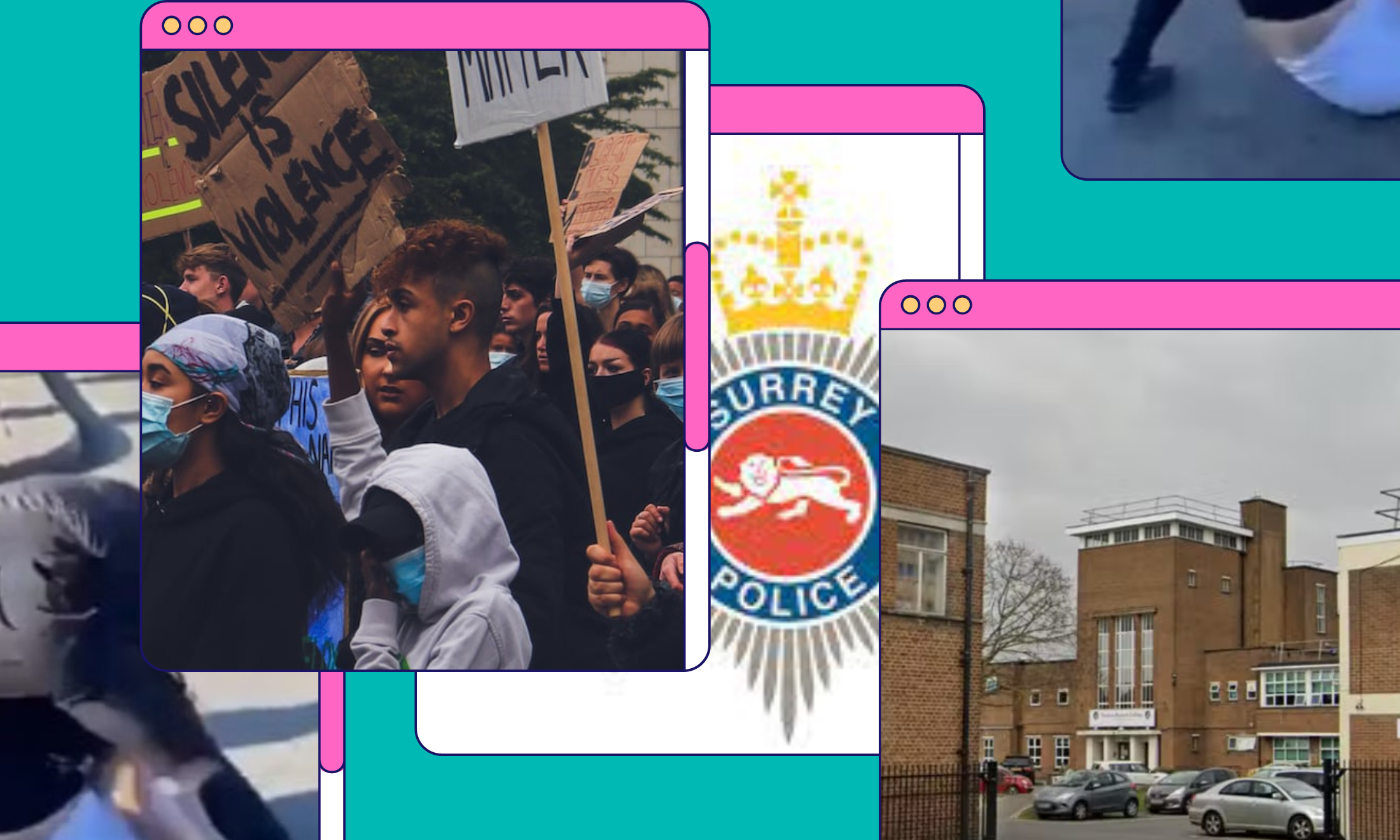
photography via Unsplash
Anti-Asian racism is its own particular brand of bigotry – to defeat it, we must understand it
After a shooting spree in Atlanta, we have to reflect on how fetishisation harms Asian women and how it represents a larger network of sexual racism.
Siam Hatzaw
19 Mar 2021
Content warning: this article contains mentions of violence and racism
On 16 March, a white man walked into two Atlanta massage parlours and shot dead eight people. Six of them were women of Asian descent. The killings are the latest, tragic, escalation in a pattern of rising of anti-Asian racism.
In the UK, police data suggested a worrying trend, with a 300% rise in abuse against Chinese, East and Southeast Asian people in the first quarter of 2020. In the US, between March 2020 and February 2021, 3795 reports of anti-Asian racism were made to non-profit Stop AAPI Hate. Comparative studies suggest that anti-Asian hate crime increased by 150% compared to 2019 – while hate crime against other minority groups overall decreased. Women reported receiving abuse 2.3 times more than men, a stat that reflects the specific intersection of “gender-based violence, misogyny and xenophobia” that likely collided to result in the harrowing events in Atlanta.
The suspect in the Atlanta killings claimed this crime was not racially motivated. Authorities dutifully relayed what the suspect told them verbatim – that he has what he considers a “sexual addiction” and wanted to “eliminate the temptation” supposedly posed by massage parlours. The shooting, remarked Capt Jay Baker of the Cherokee County sheriff’s office, was the result of “a very bad day”.
Unsurprisingly, this reasoning was met with uproar – an insult to families of the victims. The killings come after a full year of public attacks on Asian people, including being “shoved, beaten, burned, screamed at, spat upon, coughed at [and] shunned”. Yet these alarm bells of rising violence – rung loudly by Asian communities across both the US and UK – went unheard until they culminated in the deaths of eight people. Why is this always the case? We can’t keep waiting for sensational tragedies before we pay attention. It’s time to examine the structures that pave the way for such violence and employ preventative measures rather than reactive ones.
Anti-Asian racism in US and UK contexts is rooted in colonial, imperialist histories. Fears of the ‘yellow peril’ in the 20th century portrayed Asian immigrants as a threat to be expelled, leading to the US Chinese Exclusion Act of 1882. In recent decades, this has been obscured by the “model minority” myth established to create a wedge between racial minorities. The term was coined by sociologist William Petersen to make comparisons between Japanese Americans and African Americans, praising Asian Americans for rising above the adversity of WWII incarceration camps to become “hardworking, rule-abiding citizens”.
“Asian women in particular occupy a unique space in Western imagination when this is combined with fetishisation, turning us into submissive objects of desire”
Although on the surface these appear to be positive attributions, it encourages the need to pander to a dominant culture and assimilate for “contingent acceptance” thus dismissing hardships. It also classifies multiple distinct groups under a single monolithic rubric failing to account for the diversity of experiences between different minorities. It encourages alignment with whiteness to undermine other marginalised groups to which we are compared – the myth itself is rooted in anti-blackness perpetuating a harmful trope of conflict between black and Asian communities. Dae Shik Kim Jr. calls for a “radical readjustment”, noting that assimilation as a path to overcoming racism is “achieved only by distinguishing, and distancing, oneself from other minorities: xenophobia and racism, enacted by victims of xenophobia and racism”.
Capitalist and classist structures contribute to this perception of Asian groups, positioning us as the ideal labourer, almost robotic. Stereotypes paint us as passive, hardworking, unemotive geeks with frequent jokes surrounding child prodigies and ‘Tiger parenting’ all of which contribute to subtle dehumanisation.
Asian women in particular occupy a unique space in Western imagination when this is combined with fetishisation, turning us into submissive objects of desire. This dehumanising process is evident when we look at the demographics of migrants in different forms of service work and sex workers. These employees are often seen as anonymous and replaceable (read: disposable). This is exemplified by the treatment of key workers at risk during the pandemic who are “more likely than average to be from a BAME background, be women, be born outside the UK”. In the US this translates to the lifting of mask mandates in some states, as one example. Mayor Keisha Bottoms had the appropriate response when asked if the massage parlours were offering illegal sexual services, although officials had no indication that the businesses were operating illegally, saying that “the city was not going to victim blame”.
The wider issue of Asian objectification filters down into our portrayal in pop culture, often the quirky, undeveloped side character or employees at a nail salon used as props. If we look into Hollywood history, we see the ‘Dragon Lady‘ and the ‘China Doll’ which paint Asian women as either dangerous, domineering seductresses or weak, submissive possessions respectively. Both stereotypes reflect the hypersexualisation Asian women are consistently subjected to. The stereotype of submission, in particular, amplified in pornography, makes us a target of sexual exploitation as a demographic.
Patrica Park traces the history of the Asian fetish, noting the impact that US military presence in Asia had on sealing the image of the sexualised Asian woman, exotic yet invisible, ready to service white male desire. However, whilst we divorce ourselves from these perceptions it’s vital we remain advocates for the protection and rights of sex workers and avoid shame-based narratives. The key difference is in agency over our own sexuality. Our exploitation is the punchline of endless jokes, such as the infamous phrase, uttered by the character of a Vietnamese sex worker in war film Full Metal Jacket that many of us are so uncomfortably familiar with: “Me so horny. Me love you long time. Me sucky sucky.” Asian women have had this line jeered at us since we were children as racism cloaked in “humour” becomes casualised. The normalisation of Asian fetishes is reflected in the men who have no qualms telling me about their “yellow fever”.
“The Atlanta suspect’s disturbing claims of a killing motivated by the desire to eliminate ‘temptation’ point to influences of toxic purity culture on sexual obsession, and a specific strain of white Christian nationalism”
These examples form part of a larger network of sexual racism. The Atlanta suspect’s disturbing claims of a killing motivated by the desire to eliminate “temptation” point to influences of toxic purity culture on sexual obsession, and a specific strain of white Christian nationalism. When describing his “sexual addiction”, it’s important to understand that in many evangelical circles, this concept differs in definitions. Because sex is so intrinsically tied to the idea of sin, “sexual temptation” is presented as an addiction. Emily Joy’s #ChurchToo quotes from a popular evangelical book that describes sex outside of marriage as an addiction. In Michael Luo’s reflection on the history of white American Christianity, he discusses data suggesting Christian nationalism was invariably the strongest predictor for displays of xenophobic attitudes regarding Covid-19.
Crucially, sociologists found “Christian nationalism is not the same as personal religiosity” and “religious commitment […] tends to improve attitudes on race”. To be clear – this is not a case of blaming Christianity or any specific church, nor do these wider societal factors absolve blame from the individual. Rather, these reflections highlight how dangerous ideas are deeply entrenched within a framework with the potential to become twisted into something more sinister, in this case emphasising “sexual sin” as a temptation to be eradicated.
Addressing the roots of this violence requires dismantling the toxic environments that cultivate this mindset. White Christian nationalism must also acknowledge its history of “civilising” missions which set out to colonise regions across Asia for resources and labour. There are unsettling connotations between the idealised image of submissive Asian women, and Western imperial missions to conquer and dominate the region. Reckoning with our uncomfortable past is an important step to repairing present-day relationships between communities.
Ultimately, in our response to anti-Asian racism, we should avoid seeking answers in carceral solutions. These hinge on the idea that the legal system is there to protect people of colour, when it’s failure to do so is heartbreakingly clear. Instead, we can turn to grassroots organisations working towards cross-community coalition. The structures upholding white supremacy are invested in our disconnection as marginalised groups, which we should resist in organisation efforts.
Solidarity focuses the pressure against that which seeks to oppress us all – in times like this, it’s central to the fight against white supremacy. Many of us felt an acute pain watching this story play out. Those of us whose families migrated, generations deemed at once anonymous yet threatening, idealised immigrants yet perpetual foreigners, working thankless hours for countries that want to spit us back out. Emotions are raw. We are angry and exhausted and deserve to feel safe. As we grieve, let’s continue to call out anti-Asian hatred as it is, and recognise how these seeds grow to form a culture that births such a violence where racism and misogyny meet in deadly congress.
Organisations working to support ESEA communities in the UK include: Remember and Resist, the Kanlungan Filipino Consortium, ESA Scotland, Hackney Chinese Community Services, End the Virus of Racism, Don’t Call Me Oriental, besea.n and DAYLDN
This post was updated on 20 March 2021 to reflect that the US Chinese Exclusion Act was passed in 1882. A previous version mistakenly stated it came into force in 1982.

Britain’s policing was built on racism. Abolition is unavoidable

How Pakistan’s Khwaja Sira and transgender communities are fearing and fighting for their futures

Their anti-rape performance went viral globally. Now what?





